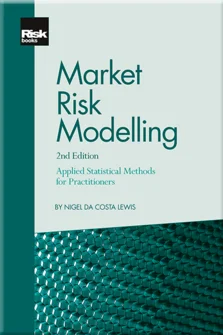Three Essential Models for Volatility
Preface
Risk Modelling and its Myths
Mastering the R Statistical Package
Key Concepts on Probability
Tools for Describing Risk Factors and Portfolios
The Essentials of Hypothesis Testing for Risk Managers
Alternative Methods to Measure Correlation
A Primer On Maximum Likelihood Estimation
Regression in a Nutshell
Fitting Probability Distributions to Data
Practical Principal Components Analysis
Three Essential Models for Volatility
Random Numbers and Applied Simulation
Tail Risk Modelling
Conclusion to 'Market Risk Modelling (2nd edition)'
Volatility models are important to traders, investors, and risk managers. Volatility forecasts are used to derive option prices, to update hedge ratios for derivatives portfolios and fed into value-at-risk models. Tools to assist with modelling volatility are therefore of key importance. We will discuss three of the most practical models in this chapter. The first is based on moving averages; the second the generalised autoregressive conditional heteroskedastic (GARCH) model; and the third is the exponentially weighted moving average (EWMA) model.
MASTERING VOLATILITY
Volatility is a measure of variability in price over some period of time. Traders are interested in daily volatility, investors in monthly or quarterly movements, whilst historians and scholars may take measurements over many decades. Asset prices are inherently volatile with long periods of apparent stability followed by abrupt jumps upwards or downwards. On numerous occasions market participants have been surprised by sudden and enormous changes. In October 2008 the Dow Jones 30 Industrial Index fell 19%; on October 19, 1987, it declined by around 23%, and again by 18% on August 31, 1998; the Federal Fund’s
Copyright Infopro Digital Limited. All rights reserved.
As outlined in our terms and conditions, https://www.infopro-digital.com/terms-and-conditions/subscriptions/ (point 2.4), printing is limited to a single copy.
If you would like to purchase additional rights please email info@risk.net
Copyright Infopro Digital Limited. All rights reserved.
You may share this content using our article tools. As outlined in our terms and conditions, https://www.infopro-digital.com/terms-and-conditions/subscriptions/ (clause 2.4), an Authorised User may only make one copy of the materials for their own personal use. You must also comply with the restrictions in clause 2.5.
If you would like to purchase additional rights please email info@risk.net











